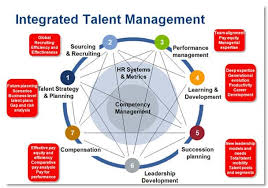
Planning and executing HR strategy using talent development approaches
Order Instructions:
Dear Admin,
As you read Chapter 2 of Bratton and Gold (2012) (file is attached or by email), you will begin to understand the various ways in which human resource strategy is made and used in organisations. You will notice that many of the models follow a traditional framework of strategy making whereby human resource or people issues become second- or third-order (Purcell, 1989) concerns. The two alternative views of strategy provide a perspective in which the workforce becomes central to the success of the firm and throughout this module; this is the approach that you will be encouraged to take.
Reference:
Purcell, J. (1989) ‘The impact of corporate strategy on human resource management’. In: Storey, J. (ed.). New perspectives on human resource management. London: Routledge, pp.67-91.
To prepare this essay:
1)Think about human resource and people elements of organisational strategy.
2)Discussing the ways different organisations plan and execute HR strategy using talent development approaches.
3)Extending the conversation into new but relevant areas regarding HR strategy and talent development.
Also,
1) The answer must raise appropriate critical questions.
2) Do include all your references, as per the Harvard Referencing System,
3) Please don’t use Wikipedia web site.
4) I need examples from peer reviewed articles or researches.
5) Turnitin.com copy percentage must be 10% or less.
Note: To prepare for this essay please read the required articles that is attached or sent by email.
Appreciate each single moment you spend in writing my paper
Best regards
SAMPLE ANSWER
Planning and executing HR strategy using talent development approaches
Talent development is of great importance in attracting and retaining very skilled individuals. The senior executives of an organization need to consider that an effective way of attracting and retaining talent entail creating an environment in which talented individuals can develop (William & Kazanas 2010). This paper provides an exhaustive discussion of the ways that different organizations plan and implement Human Resource strategy with the use of talent development approaches.
Strategy is understood as the scope and direction of a business organization over the long term, which attains advantage within a changing environment via its configuration of competencies and resources with the goal of fulfilling expectations of stakeholders (Purcell 1989). Organizations have to plan for the long-term, medium-term, and short-term for them to be successful and to stay competitive within the commercial marketplace or to provide value for public money.
In general, training and talent development is owned by the organization’s HR and is typically based upon the Management Development philosophy of the company, which usually focuses on preparing staff members for future – mainly managerial – jobs (William & Kazanas 2010). In talent development, each employee is trained individually. Talented individuals look for opportunities to grow and they often go to companies which provide enough opportunities for them to do so. Holbeche (2011) reported that if organizations are actually serious with regard to attracting, keeping and developing high-quality talent, they should view themselves as growth platforms in which employees are able to develop themselves quicker than they could somewhere else.
There are 2 key aspects to making sure that companies actually get the best from their staff members. The first one is basically about the decisions made by a company’s top management in how they resource the company and it involves activities like human resources (HR) planning, hiring and selecting staff members, training and developing them and making sure that the company has the right talent to succeed not only in the workforce altogether, but also in its management and leadership potential (Bratton & Gold 2012). The 2nd element is somewhat more subtle and not easy to manage and is about the organization’s working practices as well as culture, which is influenced by various factors for instance the organisational structure as well as the recognition and reward systems that have been put in place. Managing the human capital of a company entails taking a general viewpoint of the way in which all of these practices fit together and the impact that they have (Bratton & Gold 2012).
For a company to be a platform for talent development, it needs to think holistically with regard to the integration of virtual and physical environments and the management systems which help in motivating, measuring, and developing talent. Talent development is not only about employee training programs. Bhattacharyya (2014) stated that training programs are an effective way of helping individuals to develop a particular knowledge or skill set. As the rate of change increases however, it could become hard to predict the skills that employees would require. In spite of how good training programs are, there could be extra benefit from finding ways of helping individuals to learn faster each day in their work environments. It is worth mentioning that growth opportunities could happen on the job in which staff members may learn from associates and workmates. In essence, this on-the-job model of learning could allow employees to continuously attain the pertinent skills as well as tacit knowledge within their domain (William & Kazanas 2010).
References
Bhattacharyya, DK 2014, Talent Development Process of CPSEs: A Reflection on Practices and Requirements. Journal Of Institute Of Public Enterprise, 37(3/4), 91-99.
Bratton, J & Gold, J 2012, Human resource management: Theory and practice. London, England: Palgave Macmillan
Holbeche, L 2011, Aligning Human Resources and Business Strategy. Amsterdam: Routledge.
Purcell, J 1989, ‘The impact of corporate strategy on human resource management’. In: Storey, J. (ed.). New perspectives on human resource management. London: Routledge, pp.67-91.
William JR & HC. Kazanas 2010, The Strategic Development of Talent. Human Resource Development Press.
We can write this or a similar paper for you! Simply fill the order form!




